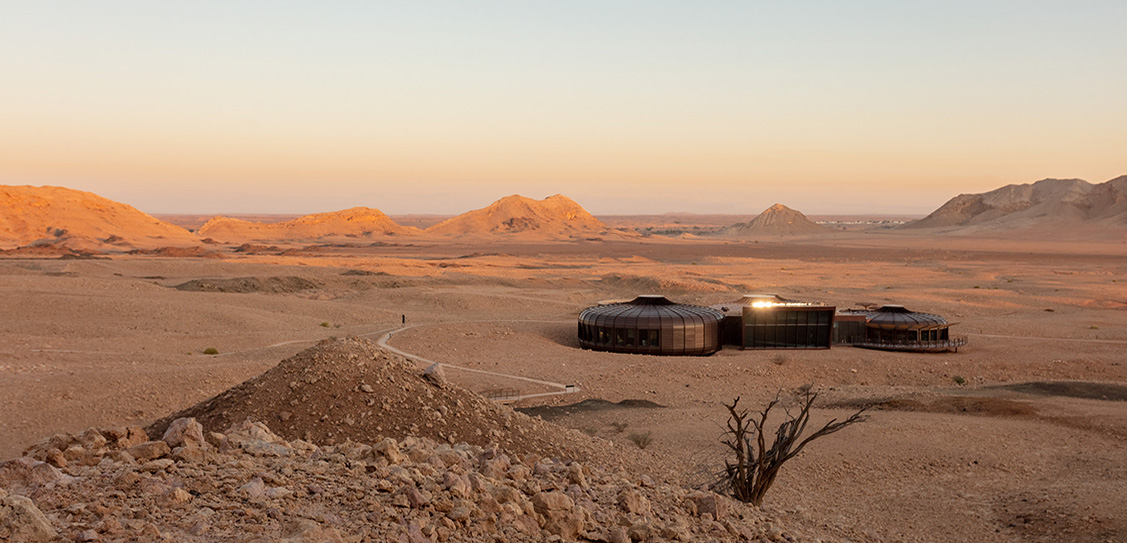The Buhais Geology Park Interpretive Centre, designed by Hopkins Architects, has officially opened. The park lies approximately 30 miles south-east of the city of Sharjah in a region of prehistoric and geological significance; featuring marine fossils from more than 65 million years ago, spectacular mountain ranges and ancient burial sites from the Stone, Bronze and Iron Ages.
Seeking to create a series of exhibition spaces which vividly present the region’s significant geological phenomena, Hopkins Architects designed five interconnected pods of varying sizes. These accommodate exhibition areas, an immersive theatre, a café offering panoramic views of the dramatic Jebel Buhais ridge rising some 100m above, a gift shop and other visitor facilities.
The geometry of the pods was inspired by the fossilised urchins present on site and developed into a typology which could be sized to suit the centre’s different functions. To minimise disruption to the existing fauna, geology and terrain, the pods were designed as prefabricated concrete structures and only lightly touch the ground on in-situ reinforced concrete foundation discs. A sixth, unconnected pod is used as a service building.
The pods are clad in steel panels, coloured to reference the different hues of the surrounding landscape as well as to shade the precast concrete structures. These panels are fixed into an array of steel ribs, giving the pods their distinctive sculptural, cantilevered forms and further referencing the exoskeleton of the urchin fossils.
Visitors enter the building along an elegant ramp to the central hub where, once inside, they are greeted and guided through the centre. The restrained palette of the interior materials complements the pods’ exposed precast concrete shell segments. In some pods, glazing and oculi have been inserted to control natural light into the space, tempering the brightness of the desert sun.
Linking the pods and looping sinuously around the site is an outdoor trail accessed from the main exhibition area. This trail, designed to encourage visitors to explore the jebel, Arabic for mountain, incorporates viewing areas, a classroom shaded by a high-tensile canopy and raised walkways across natural rock formations and ancient burial grounds.
Using a series of model-based interactive displays, the centre explores the region’s mountains, sand dunes and the Arabian Gulf as dramatic evidence of the area’s rich tectonic history over time, in particular, the disappearance of an earlier ocean and the creation of the limestone mountain ranges of Jebel Buhais. Visitors and researchers can actively examine local rocks and fossils.
The Geology Park is the latest addition to a suite of learning centres operated by Sharjah’s Environmental Protected Areas Authority who lead conservation efforts in the Emirate, manage protected areas and provide exceptional educational experiences.
Our ‘light touch’ approach references the site’s marine fossils by delivering a series of ‘urchin’ pods that sit cleanly on the ground and seek to become a part of the local environment. The centre’s inner spaces enable visitors to follow a journey that ultimately leads them to explore the jebel itself.
Hopkins’ powerful but sensitive architecture offers Sharjah an exciting new environmental focus, containing a dynamic exhibition authored by the geologist, the late Dr. Gautam Sen, which is especially relevant as we face further dramatic climate change.
P. Jackson, Architect Advisor, HH the Ruler’s Office


